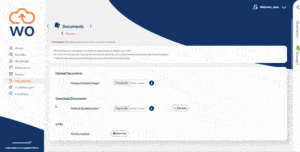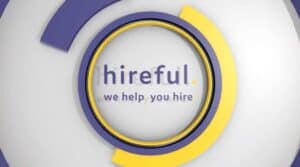When a successful applicant accepts a job offer, it can feel like it’s the end of the hiring process. After all of the stresses and strains of recruitment, the positions are finally filled – everyone’s happy. It’s an attitude that may help to explain why so many organisations fail to properly handle what happens next – all of those critical HR tasks that are required before any successful applicant can become an employee. It’s a phase of the hiring cycle known as onboarding and despite its importance, it remains a vulnerable area for many organisations with misfiring systems and outdated management methods.
What is onboarding?
Employee onboarding covers all of the HR tasks required to make sure that successful candidates make a smooth transition into becoming productive employees. This includes everything from offer letters and contract handling to welcome packages and first-day preparations for new starters.
More than a third (68 percent) of UK HR departments and hiring teams are currently still using a manual approach to onboarding – communications are handled via a mix of posted paperwork, phone calls, texts and emails.
It makes data migration slow, resource-sapping and error-prone as administrators are required to input, adapt and transfer large amounts of employee information by hand.
A byproduct of onboarding inefficiency is long and frustrating experiences for prospective employees. It can take weeks for posted contracts to be signed and returned – especially if any changes are required.
Rising drop-out rates
Delays during this phase will reduce the chances of onboarding being successfully completed. A 2017 study, commissioned by webonboarding, found that 15 percent of respondents had opted out of jobs because of onboarding frustrations. A failure to effectively bridge this information gap can also have important legal consequences. The ‘purpose limitation’ principle of the EU’s recently introduced GDPR (General Data Protection Regulation) legislation requires that hiring teams collect only info that’s ‘necessary’ and ‘essential’. The GDPR guidelines also place a responsibility on HR departments to ensure that any data that’s collected is accurate, easily accessible and securely stored. Compliance breaches can be punished with fines of up to €20 million. As the complexity and volume of hiring demands increases, the challenge of migrating data becomes increasingly problematic. Hiring teams find themselves overwhelmed by the paperwork.
Bridging the gap
Webonboarding was created as a simple and effective way to seamlessly bridge this gap between recruitment and employment. It does so by removing the need for manual HR tasks and paper-based communications. All of the information exchanged between HR, hiring managers and onboardees is handled via an online portal. Digital signing removes the need for contracts to be posted – everything is handled digitally and in real-time. This allows data migration to be automated with the system able to import large volumes of data from an external source with the click of a button. It reduces processing times and minimises the risks of human errors being made. It provides a level of information control that’s not possible with traditional onboarding set-ups. By removing the administrative burden, hiring teams can start to focus on improving the qualitative experience – reducing the dropout rate. It also provides the management tools needed to meet the stringent new requirements of GDPR legislation. Effective handling of new starter data is an essential starting point for any compliant operation.
If your organisation is struggling to bridge the gap between recruitment and HR, you can find out more about the webonboarding solution here




